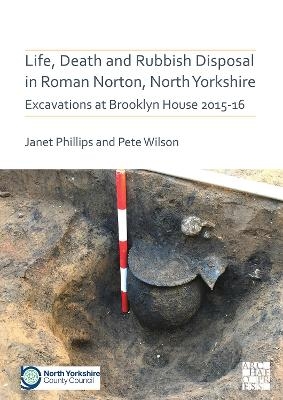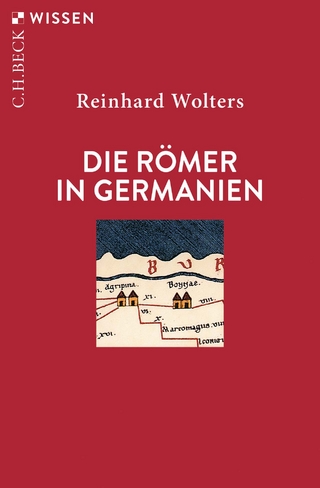
Life, Death and Rubbish Disposal in Roman Norton, North Yorkshire
Archaeopress (Verlag)
978-1-78969-838-1 (ISBN)
Life, Death and Rubbish Disposal in Roman Norton, North Yorkshire: Excavations at Brooklyn House 2015-16 reports on excavations in advance of the development of a site in Norton-on-Derwent, North Yorkshire close to the line of the main Roman road running from the crossing point of the River Derwent near Malton Roman fort to York (Eboracum). The Brooklyn House site provided much information on aspects of the poorly understood ‘small town’ of Delgovicia. The area came to be used for apparently widely-dispersed burials in the mid-3rd century AD. Among these was the bustumtype burial of a soldier, or former soldier, which produced a well-preserved assemblage of military equipment and incorporated some ‘non-standard’ features. In addition, evidence was found for a possible mausoleum. During the late third and fourth centuries the burial activity was succeeded by occupation in the form of substantial stone-founded, or in some cases possibly stone-built buildings fronting onto the Roman road which was the main approach road to the town from the south. These structures could have been related in some way to the Norton Roman pottery industry, the core area of which was located to the east of the site, although no evidence from them suggested this. Following the fairly short-lived occupation, much of the site was used for the disposal of large quantities of rubbish and structural debris that presumably originated from locations closer to or beyond the river crossing, including possibly the Roman fort. The Roman pottery assemblage incorporated in excess of 21,000 sherds and adds considerably to our knowledge of pottery use and production in Roman Malton/Norton. Similarly, the substantial and well-preserved Roman-period finds assemblage provides insights, not only into the bustum burial but also wider aspects of life in Delgovicia. Within the assemblage, there were some unusual and rarely found individual items such as a pair of iron-working tongs, a two-link snaffle bit and a bone needle case, as well as a wide range of other material including military equipment, jewellery, styli and a possible scroll holder. The medieval and later pottery from the site provides a baseline for work on assemblages recovered from Malton/Norton in the future.
Having started in archaeology as a volunteer on the Mary Rose in 1982 John Buglass formed his own company, JB Archaeology Ltd, in 2004. JB Archaeology has undertaken all of the archaeological works for the Brooklyn House development since the initial desk-based assessment in 2014. John has a BSc (Hons) Biology and an MA Archaeological Science. ; After earning her MA in Medieval History and Archaeology from St. Andrews University, Janet Phillips began work as an archaeologist in 2007. While working, she gaining a further MA in Archaeology and Heritage from Leicester University. From 2011 Janet worked as a Project Officer on a range of multi-period sites. ; Pete Wilson worked for English Heritage/Historic England for many years, including as Head of Research Policy (Roman Archaeology), and is now an Independent Consultant. A graduate of Birmingham University, he obtained a PhD from the University of Bradford for a thesis on Roman North Yorkshire.
Chapter 1. Introduction – Pete Wilson ;
Chapter 2. The excavation – Janet Phillips and Pete Wilson ;
Chapter 3. Prehistoric pottery – Blaise Vyner ;
Chapter 4. The Roman pottery – I.M. Rowlandson and H.G. Fiske ;
Chapter 5. The post-Roman pottery – C.G. Cumberpatch ;
Chapter 6. The coins – Richard Brickstock ;
Chapter 7. The small finds and vessel glass / The finds from the cremation burial – H.E.M. Cool and S.J. Greep ;
Chapter 8. The ceramic building materials – J.M. McComish ;
Chapter 9. The stone building materials – J.M. McComish ;
Chapter 10. Chipped stone lithics – Spencer Carter ;
Chapter 11. Querns, millstones and associated material – John Cruse ;
Chapter 12. The whetstones – S. Tibbles ;
Chapter 13. Human bone – Katie Keefe and Malin Holst ;
Chapter 14. Vertebrate remains – Alison Foster ;
Chapter 15. Shell – John Carrott ;
Chapter 17. Discussion – Pete Wilson ;
Bibliography
| Erscheinungsdatum | 17.07.2023 |
|---|---|
| Reihe/Serie | Archaeopress Roman Archaeology |
| Zusatzinfo | 209 figures, 54 tables (colour throughout) |
| Verlagsort | Oxford |
| Sprache | englisch |
| Maße | 205 x 290 mm |
| Gewicht | 1080 g |
| Themenwelt | Geisteswissenschaften ► Archäologie |
| Geschichte ► Allgemeine Geschichte ► Altertum / Antike | |
| ISBN-10 | 1-78969-838-3 / 1789698383 |
| ISBN-13 | 978-1-78969-838-1 / 9781789698381 |
| Zustand | Neuware |
| Haben Sie eine Frage zum Produkt? |
aus dem Bereich


